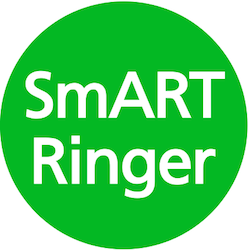As a learner I read Bob Cox’s review of the 2F teacher’s module with interest, particularly the Plain Hunt part as that’s the stage I am at myself. I have some thoughts on what helped me make the jump from call changes to plain hunt, which I’ve discussed with the other people I’m learning with. Hopefully they might help teachers get inside the confused heads of us learners 🙂
The ART training is excellent at dealing with the early stages in a very progressive way – exercises with the bell down, backstroke only then handstroke only, shadowing and so on, but when you get to Plain Hunt it seems like such a huge leap – you have to to learn a lot of new things at once to do it. It’s got to be a standing joke with my teacher about “Alan running out of brain” but it’s absolutely true. I find it much easier to take smaller but more frequent steps and plain hunt felt like a great leap. I’ve listed some things I found helpful below, none of these are particularly original ideas but they helped me break the learning down into digestible chunks.
- Before moving on to plain hunt get your learners to lead as much as you can during call changes and rather than leaving them there for long periods, keep calling them on and off the lead until they can do so smoothly and accurately. Coming on and off the lead is one of the hardest parts of plain hunt to get right.
- Encourage your learners to learn the numbers, they are going to do so anyway. Extend that knowledge by explaining the patterns behind the numbers so they begin to develop a sense of the ‘warp and weft’ of plain hunt.
- “A small cure for melancholy” is a good stepping stone. It’s the same as plain hunt but with each place rung twice. It’s easier for learners as the changes only happen every other blow and they are made on the handstroke, making it an simpler transition from call changes.
- Kaleidoscope ringing is another good exercise, there is teaching material on the ART website you can use.
- If you start learners off on the third bell and ring plain hunt doubles they only have to ring over each bell in turn to their left. I certainly found that easier.
- Start off by just ringing one lead of plain hunt and then back into rounds for a bit. Resist the urge to “go again” immediately even if they aced the lead because they’ll have found it a mental challenge. Gradually shorten the time spent back in rounds until they are comfortable enough to rung several leads of plain hunt in a go.
- Restrain your experienced ringers from berating learners about ringing by numbers rather than counting places, it may be well-intentioned and longer term it’s of course correct but when starting to plain hunt it’s too big a jump and therefore counter-productive.
- Stand by your learners in the early stages. Quietly tell them the bell numbers if they go astray but even if they don’t, having you there will be a confidence boost.
- When learners are ringing and go wrong, some of your experienced ringers may have an irresistible urge to ‘help’ by shouting “Over me!”, “Lead!” and so forth. Your learners unlikely have the spare capacity to respond correctly and it will make things worse rather than better. Make it clear that the only voice to be heard is yours.
- Get learners to cover when other learners are ringing inside. Covering is easier to do and they’ll be able to start working on ringing by rhythm and ropesight rather than bell number. And the experience of ringing steadily when someone other than themselves is wobbling will stand them in good stead 😉
- Once your learners are comfortable with ringing doubles on one bell, start them ringing different bells for doubles and extend that to minor plus cover. If they’ve learned the way plain hunt ‘works’ they should be able to do it ‘by pattern’ rather than learning another set of bell numbers.
- Before your learners start ringing get them to point in turn to the bells they are going to ring over, but say the place number rather than the bell number.This will help them start counting places without having to do that and ring at the same time.
- Learning ropesight is hard. As a ringer who has it, you’ll have most likely forgotten just how hard. It’s not absolutely necessary for ringing plain hunt, so don’t worry if your learners are struggling with it, it will come in time. Or so I’ve been assured 😉
I’m sure not all of these will work for everyone and I’m also sure there are other tips besides these, but these are the ones I found the most helpful.


This is really useful. Thanks Alan. It IS difficult to remember what it was like to learn plain hunt and the whole ropesight thing.
Ah yes, ropesight … now there’s a thing. I feel another blog post coming on 😉